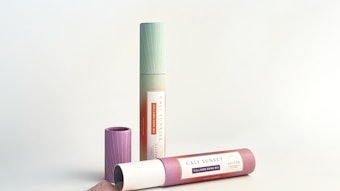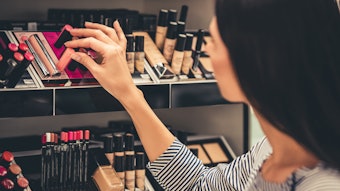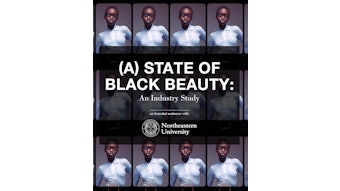- The power of social media can’t be denied, with more and more beauty consumers turning to their peers via online blogs, reviews, videos and more to gain honest product information.
- Working with a blogger or vlogger can be an attractive opportunity for a brand as a way promote products via a voice that is typically deemed as neutral and honest.
- The voice and opinions of the bloggers and vloggers have to stay authentic and honest. Otherwise, the value is lost for all parties—the brand, the blogger and consumers.
I recently had a conversation with the president of a hair care brand, and his question to me was whether he should “buy a blogger” to promote his company’s products. I told him that, while I’m sure there might be some bloggers or vloggers willing to be “bought,” buying one would defeat the whole purpose. The power of these bloggers and vloggers is the credibility they have with their audiences, and if they were to tout the benefits of only one brand, their credibility would be gone—as would their value to that brand. In fact, it could inspire backlash among savvy readers.
This is a paradox that has become increasingly important as bloggers and vloggers have come to the forefront of brand marketing. For this article, we’ll focus on hair bloggers—and more specifically, those who have transitioned from relaxers to their natural hair texture, as they have become a microcosm of the paradox.
The Power Online
There is no denying the power that bloggers and vloggers have to influence product purchases. For example, a hair care consumer named Angel Hyman recently bought Oyin Handmade Hair Dew and As I Am DoubleButter Cream for her hair twists. But it wasn’t a magazine ad, a retail display or even her hairstylist that pushed her to purchase the products. It was positive reviews from her two of her favorite hair care blogs, CurlyNikki and Janell B Stewart, that pushed her to buy these products.
“They’re the brand’s ‘in’ to the buyer,” explains September Davis, multimedia manager for New York-based natural hair brand Carol’s Daughter, of vloggers and bloggers.
The textured hair care industry is an industry with, at least partially, grassroots beginnings, where some of the top brands were created by mixtresses who cooked up concoctions in their kitchens for their own coils and curls. So it’s not surprising that natural hair bloggers and vloggers have become so powerful. The natural hair boom got its start in cyberspace, with websites like NaturallyCurly.com and blogs serving as catalysts for education, support and textured hair information.
“They helped bring the natural hair movement front and center by encouraging women to go natural, be proud and rally with other women for support and community,” says Richelieu Dennis, founder and CEO of Sundial Brands, which makes the SheaMoisture line of hair care and skin care products.
Influence and Opportunity
Many bloggers and YouTubers now wield more power than A-list celebrities when it comes to selling hair care products. Some vloggers’ YouTube videos may be viewed 200,000 times over a few days by engaged hair care consumers, and such actions make these videos more potent than traditional media. Because of this influence, bloggers and vloggers are now courted by large blogger networks and agencies—as well as by brands. In fact, many bloggers and vloggers are paid big dollars to review a particular brand or company’s products, or may receive indirect payment through advertising, event sponsorships and giveaways.
“Bloggers and vloggers have helped the brands I’ve worked with by not only getting the products in front of their readers but demonstrating their benefits in an honest and authentic way,” says Brian Azarello, media supervisor for Lunchbox Media, which hires bloggers and vloggers for companies like Unilever. “Also, influencers have their own communities of readers and followers, and with communities comes trust.”
But as many bloggers and vloggers are now out for hire, these online communities must increasingly navigate the fine line between promoting a product and losing what makes them such a powerful force—their authentic, unbiased voice. It’s a catch-22 that impacts the brands seeking positive reviews from YouTubers or bloggers. Brands may risk antagonizing the consumer they are trying to reach if they push too hard for positive reviews.
“If the influencer is insincere, their readers will notice and drop off, so there is no real benefit to anyone,” Azarello says. And some consumers already are wary of blogger and vlogger reviews. For instance, Angela Scarfone said she thinks many bloggers favor the products they are sent to review. “They don’t want to give a bad review for fear of jeopardizing their relationship with a company,” she says.
The result is that many brands are becoming increasingly choosy about the bloggers and vloggers with whom they associate. “I would steer clear of those bloggers willing to promote without limits,” says Debbie Smith, director of communications for ORS, a hair care company specializing in textured hair. “The intent or pressure will not inspire the best results. Every blogger is not for every brand, and each should be as selective as possible because there are many choices on both sides.”
The line can get so blurred that some brands even implement their own rules for regarding this type of marketing outreach. The marketing team at Carol’s Daughter, for instance, has gone so far as to specifically ask that bloggers and vloggers not promote their products. “Every time a vlogger is sent a product of ours, we ask that they deliver an honest review,” says Davis of Carol’s Daughter. “If the vlogger likes what she’s tried, then it’s not really a promotion as much as an honest positive experience, and that can’t be beat.”
Honesty and Opinion
Legally, bloggers and vloggers must tell their audiences if they’ve been paid to provide a review. In 2009, the Federal Trade Commission released its Testimonials & Endorsement Report, which was updated in 2013. It requires the disclosure of endorsements, sponsorships and other payments from online endorsers, including bloggers and vloggers. The primary reason for the disclosure requirement is to assist readers and viewers in determining whether a blogger or endorser has a material connection to the brand about which they’ve produced content, and it’s pretty obvious why this is important to know.
However, that doesn’t necessarily negate these reviews. YouTuber Shannon Teresa Boodram believes what she and her peers provide is valuable—and that brands should pay for it. “When you have people willing to do something with a lot of effectiveness for free, it is dangerous to everyone who makes a livelihood off of communicating a brand’s message,” Boodram comments. “My effort equals the brand’s effort.”
But Boodram also says she knows firsthand that getting too financially tied to one brand can be tricky. She notes that she did have an exclusive relationship with one hair care brand after she developed a good relationship with the owners. However, when the brand’s products stopped working for her, it put her in an awkward position.
“First and foremost, I have a commitment to be honest about what works for me,” Boodram says. “If you feel pressure from a brand, it’s probably time to put distance between you and them because you are not the brand, and if you become a part of it, you have lost your relevance as a blogger.”
There is no fine line, she says. “There is a thick, black, gaping hole. If I feel the line is fine, I have already lost your trust,” Boodram insists.
Lasting Engagement
Although bloggers and vloggers must be approached differently than the more traditional types of advertising—and each certainly has their own quirks, personalities, audiences and personal product preferences to deal with—marketing professionals must still evaluate blogger and vlogger effectiveness against other media. Adama Sesay, digital content and commerce manager for hair care brand Ouidad, says Ouidad relies on Google Analytics, Facebook Insights and Hootsuite to measure engagement on social media content and traffic to www.ouidad.com—which are the same metrics she uses to measure the success of PR and paid media placements. It helps give a fuller picture of a marketing plan’s effectiveness.
Brands also look at quantitative measures like traffic driven to websites, actions taken by readers and viewers (such as sharing and reposting), video views, comments and so on. “The answer is always sales,” says Caroline Marchionna, director of marketing for Chicago-based hair care company Ecoco Inc. “Whether an audience likes a company’s efforts, its advertising or how well the product works, the audience chooses what they support with their pocketbook.”
The reality is, the marketing dollars moving toward the blogosphere aren’t likely to go away, especially as influence of bloggers and vloggers on purchasing behavior continues to grow. It may soon even rival traditional forms of advertising such as TV and magazines as society increasingly looks to one another for their product opinions, rather than marketing messages developed by the brands.
But the success of this model will depend on the restraint and integrity on the part of both brands and bloggers and vloggers to ensure money doesn’t distract from being honest about a product. Because if brands truly can “buy bloggers,” everybody loses—the brands, the bloggers and especially consumers.
Michelle Breyer is president and co-founder of TextureMedia, one of the world’s largest social media hair care platforms. It works to empower, engage and educate its multicultural community of female influencers. Based in Austin, Texas, TextureMedia has an audience of more than 30 million unique visitors a year to its NaturallyCurly, CurlyNikki, CurlMart and CurlStylist websites.










